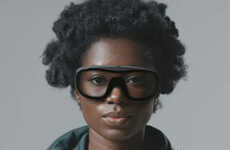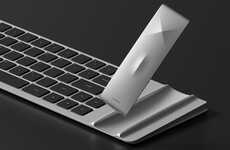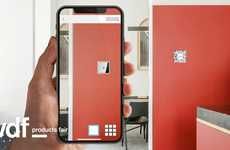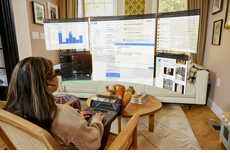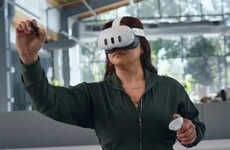
These Mixed Reality Tools Draw the Gap Between Physical and Virtual
Amelia Roblin — August 7, 2017 — Tech
References: slimdesign & behance.net
It's interesting when you consider that most of our desktop utensils are either digital or analogue, and how we haven't yet seen many mixed reality tools such as these. SLIMDESIGN out of Amsterdam has been working to blur the boundaries between what's tangible and what's possible in the digital space with their enchanting concepts for a marker, a keyboard and a ruler.
The user begins be donning augmented reality goggles, through which he can see a projected interface in front of the particular tool in use. In holding the marker, for instance, the user can simply tap it to initiate a palette, presenting a full color wheel of ink options at the artist's disposal. The ruler can assist with the drawing of perfect shapes in both two and three dimensions. By bridging the gap between what’s tangible and what’s digital, these Mixed Reality Tools are actually better optimized for human ergonomics and imagination combined.
The user begins be donning augmented reality goggles, through which he can see a projected interface in front of the particular tool in use. In holding the marker, for instance, the user can simply tap it to initiate a palette, presenting a full color wheel of ink options at the artist's disposal. The ruler can assist with the drawing of perfect shapes in both two and three dimensions. By bridging the gap between what’s tangible and what’s digital, these Mixed Reality Tools are actually better optimized for human ergonomics and imagination combined.
Trend Themes
1. Mixed Reality Tools - Mixed reality tools blur the boundaries between tangible and digital spaces, providing endless possibilities for interactive experiences.
2. Augmented Reality Goggles - Augmented reality goggles provide a whole new interface for tools, making them more immersive and intuitive.
3. Digital-meets-physical - Combining digital and physical elements leads to tools that are better optimized for human ergonomics and imagination combined.
Industry Implications
1. Art and Design - The art and design industry can benefit greatly from mixed reality tools as they provide new and innovative ways to create and interact with art.
2. Education and Training - Mixed reality tools have great potential in education and training as they provide more interactive and immersive learning experiences.
3. Manufacturing and Engineering - The manufacturing and engineering industry can benefit greatly from mixed reality tools that allow for more intuitive and efficient design processes.
4.9
Score
Popularity
Activity
Freshness



